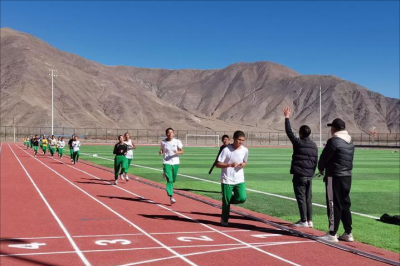| Aug.11, 2016 -- New partnerships in the aspect of airlines offering air service between Tibet and destinations in south Asian countries are in the midst of significant expansion, but what’s going on at the ground level is also worth mentioning. In the past year, China has made more clear intentions to strengthen infrastructure and networks connecting China to the southwest with its south Asian neighbors.
The construction of such international railroad routes will further free up the entry and exit of goods, services and importantly culture from and to the Tibet Autonomous Region. Zong Gang, Deputy Director of the Science and Technology Department at Beijing University of Technology, stated during a forum in Beijing run by the China Tibetology Research Center that construction of this transnational railroad “is economically and technologically feasible now.”
The trans-Himalayan railway would start from Shigatse, to Lhasa and it would travel to Gyirong, a small border town several hundred kilometers to the west of Mt. Qomolangma. From there it would cross the border extending into Nepal’s capital (Kathmandu). China Daily reported that Chinese researchers have clarified that it will not be a high-speed network.
A third extension of the railroad could pass through the Nathu La area, a pass that is 4,310 m at its highest point near Yadong. In fact last June, China opened a new land route along the pass for Indian citizens wanting to make pilgrimages to see holy places such as Mount Kailash and Lake Mansarovar (inside of Tibet). These are places considered sacred in many religious traditions in the region and not only unique to Tibetan Buddhism.
With the construction of such new lines could the already huge demand for Tibetan products such as incense and barley products be increased all the more? Beautiful thangka, Tibetan traditional clothing, and other aspects of Tibetan culture may have more opportunity for development with new demands as the dynamics of cultural exchange would transition. What’s more, the opening of these routes will also likely bring more of the culture of south Asia into Tibet, and interesting transformations could emerge. These new orientations made possible with new railroad infrastructure will most likely commence a new chapter in the history of the international region.
By: Andrew Waters
|
- Home
- News Tibet |Exclusive |China |World |Related News |Latest
- Documents White Papers |Others
- Photo Politics |Economy & Society |Culture & Religion |Human & Nature |Beautiful Tibet |Other Tibetan-Inhabited Area |Exchanges |Related
- Video News |Documentary |Micro-Video |Entertainment
- Art
- Tourism
- In Focus
- About Tibet






